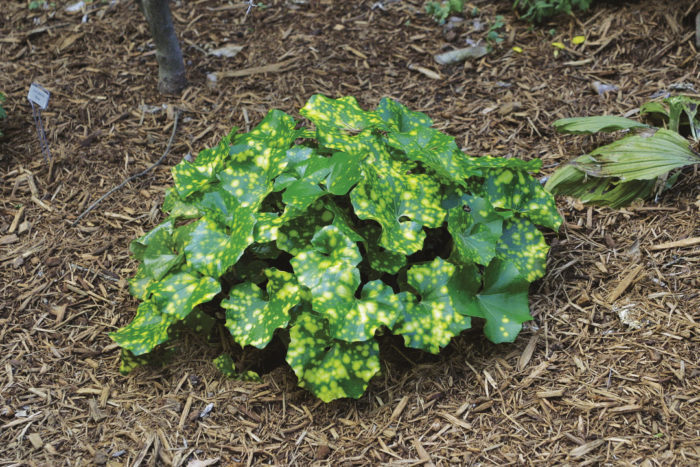
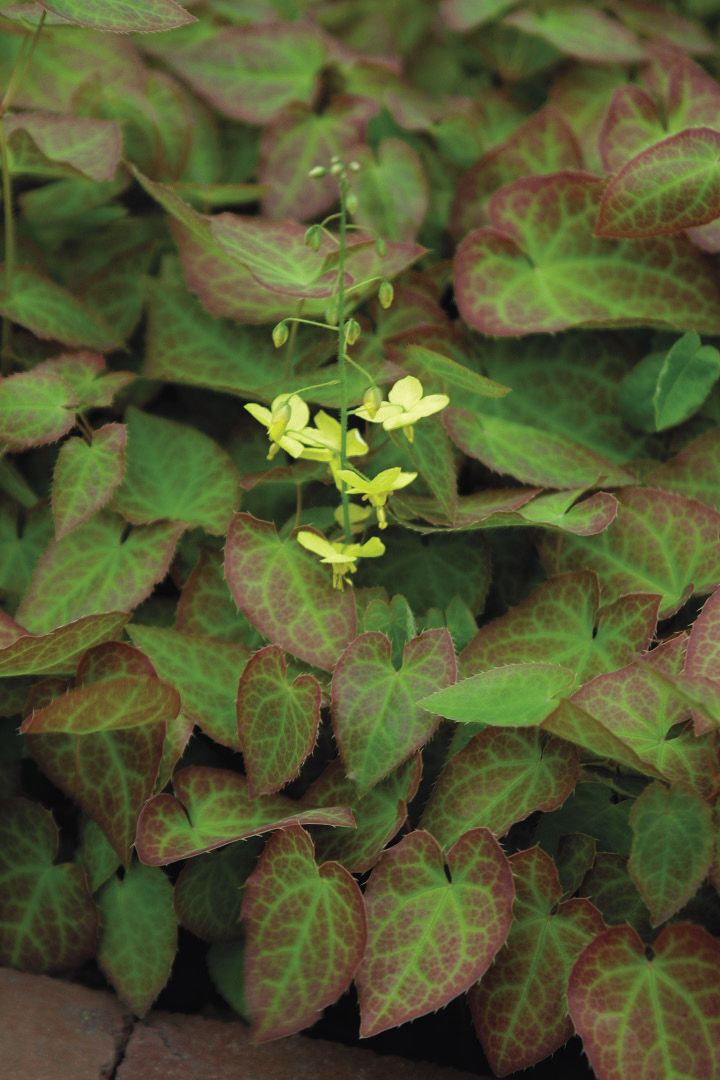
Epimedium
Name: Epimedium spp. and cvs.
USDA Hardiness Zones: 5 to 9
Size: 1 to 2 feet tall and wide
Conditions: Filtered sun to light shade; moist to dry, well-drained soil
Year-round gardens beg for epimediums, like ‘Frohnleiten’ (E. × perralchicum ‘Frohnleiten’, pictured). The pairs of fairy wing–shaped leaves respond to seasonal temperatures, displaying lustrous green during the warm season and purple and red hues in the colder parts of the year. The woodland fairies and frogs get the additional view of the silvery undersides. Cultivars with thick, leathery leaves will deter deer and endure the winter better than those with finer, thinner leaves.
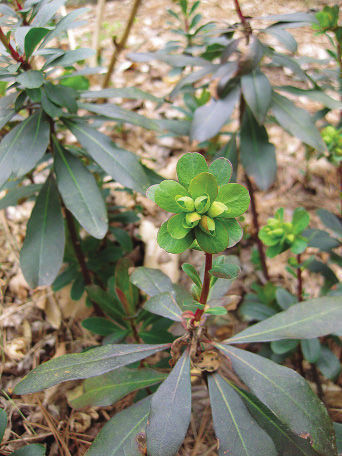
Robb’s spurge
Name: Euphorbia robbiae (syn. E. amygdaloides var. robbiae)
Zones: 6 to 9
Size: 1 to 2 feet tall and 3 feet wide
Conditions: Partial shade; well-drained soil
Too often, this beautiful spurge is underestimated and underappreciated. Yes, it can be used as a fantastic ground cover in rough, difficult, densely shaded areas, but its true character and beauty is revealed in more ideal settings. The deep, almost blackish green foliage is evergreen and highly deer resistant. Airy, bottlebrush-like chartreuse inflorescences unfurl in early spring and produce sweet nectar that is irresistible to honeybees. Robb’s spurge spreads with restrained vigor, and undesirable offspring can be easily plucked away to maintain a desired shape and density. To minimize seedlings, trim away and compost the spent flowers in early summer.
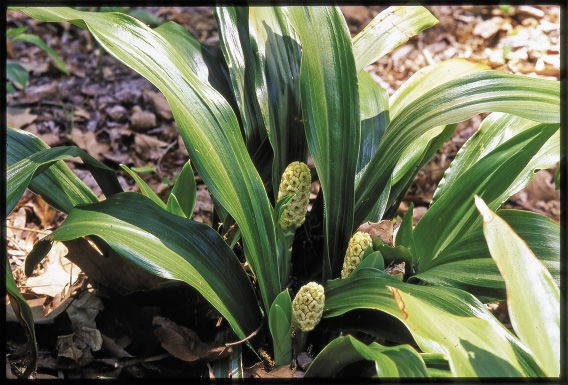
Sacred lily
Name: Rohdea japonica
Zones: 6 to 9
Size: 12 to 18 inches tall and wide
Conditions: Light to full shade; moderately moist, well-drained soil (especially in winter)
For the patient gardener, the sacred lily is elegant and rewarding all year long. This is one of the most precious native plants of Japan, but it is relatively unknown in the United States; fortunately, more garden centers are offering this cherished and easy—albeit slow-growing—evergreen perennial. Deer have no interest in the fetching foliage, which is as smooth as aniline leather. The summer flowers resemble creamy honeycombs, which develop plump green berries in the summer heat; by Thanksgiving, the berries are bright orange, and by the new year, they are a glowing crimson.
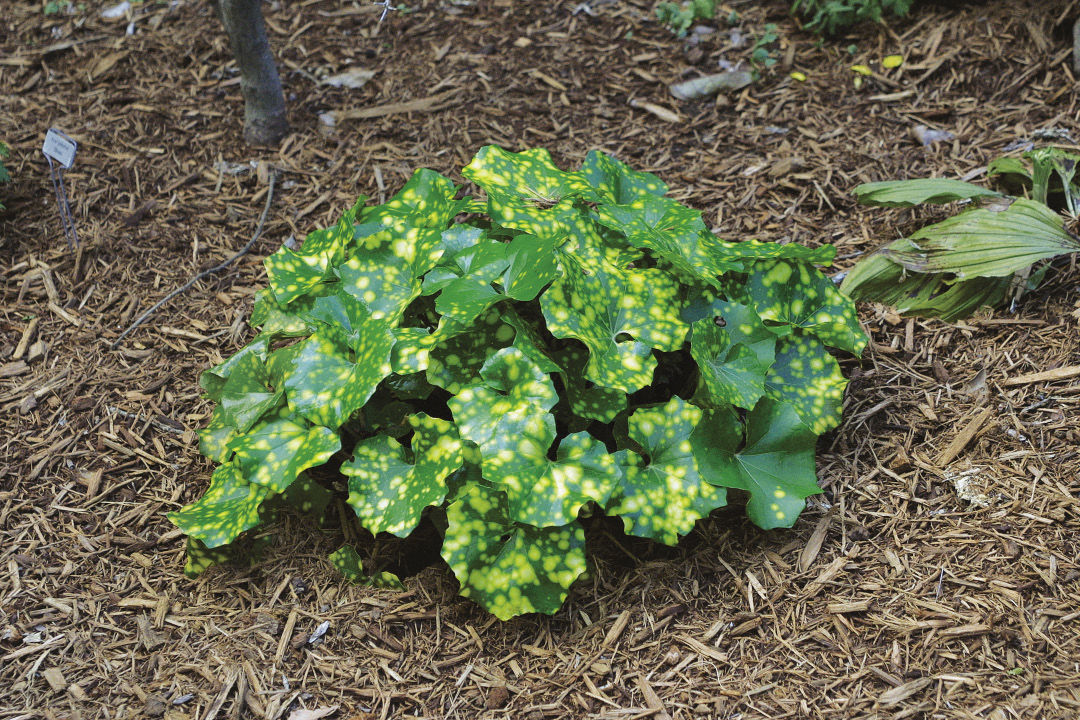
Leopard plant
Name: Farfugium japonicum ‘Aureomaculatum’ (syn. Ligularia tussilaginea ‘Aureomaculatum’)
Zones: 7 to 9
Size: 18 to 20 inches tall and 2 feet wide
Conditions: Partial to full shade; well-drained soil
The spectrum of colors in the distinctive spots on leopard plant conjures up thoughts of the sun and searing white heat. Like its namesake, this plant strongly dislikes soggy, cold conditions. The chill of winter is fine; it’s the combination of wet and cold that will kill this cat. It is deer resistant and evergreen within most of the Southeast, but it will hug the ground during the coldest months. It is tolerant of drought conditions but will wilt during hot, dry spells; moderate watering during these times will revive and restore its stature. Leopard plant matures into a clump, and will be crowned with numerous tall stems of daisylike, butter yellow flowers in fall.

















Comments
Log in or create an account to post a comment.
Sign up Log in